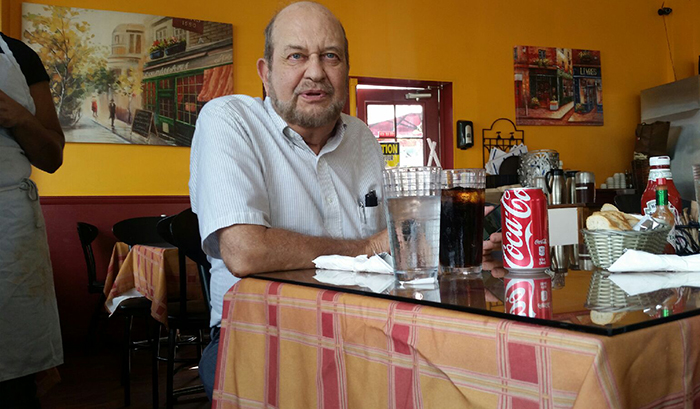Turn on the TV next time a NASCAR stock car race is on and get a good look at the coveralls worn by the drivers. They are covered with patches bearing the logos of many and varied companies that sponsor their automotive efforts, from oil and carmaking companies to breweries.
Now imagine a normally staid state legislative hearing, where politicians of both major parties today show up in conservative business suits. Those folks soon could look like a stock car racing crew if an initiative now circulating makes the November ballot and passes.
The measure, formally called the “Name All Sponsors California Accountability Reform (or NASCAR) Initiative,” would require all state legislators to wear the emblems or names of their 10 top donors every time they attend an official function.
The measure’s sponsor, Rancho Santa Fe businessman John Cox, takes delight in the idea. He already has done some touring around California with 120 life-size photographic cutouts of politicians dressed up as they might have to under his plan.
This idea has some similarity to part of the defeated 2006 Prop. 89, an attempt to set up a publicly financed election system that would also have required every privately-financed political ad, whether on television or in newspapers or mailed flyers, to list its three biggest financiers in type as large as the biggest print anywhere else in the ad.
That proposition lost, but not because of the donor exposure provision. It went down by a 76-24 percent margin because voters didn’t want to be taxed for the sake of politicians.
There is no tax associated with the NASCAR initiative, which Mr. Cox, a former chairman of the Cook County (Chicago) Republican committee, is willing to finance to the tune of $1 million.
“The whole idea is to hold the entire corrupt, stupid system up to ridicule,” said Mr. Cox, who ran unsuccessfully in Illinois for both Congress and the U.S. Senate before moving to California in 2008.
One who appreciates the sentiment behind this is Jamie Court, head of the Consumer Watchdog advocacy group, which sponsored Prop. 89. “This could definitely make politics more racy,” he said. “If this passes, it could turn the statehouse into a nudist colony because no one would want to pin their real owners onto their clothes. We might even discover that the emperors really don’t have any clothes.”
Is This Legal?
There is, you might guess, some question over whether forcing lawmakers to wear signage is constitutional, or might be a violation of their First Amendment free speech rights. Of course, no one forces them to be legislators, any more than stock car race drivers are dragooned into that calling.
Mr. Cox, for one, would welcome a court challenge on the constitutionality of dictating dress in the state Capitol. “That would be wonderful,” he said. “The real point here isn’t to force anyone to wear anything, but to fix our broken, ridiculous system. It’s a system where people who want things from government pay for and staff the campaigns of the folks who will run that government. Any objective person would call that corrupt.”
Mr. Cox, however, stops short of calling California more corrupt than his old Chicago stomping ground. “I haven’t lived here long enough to make that comparison,” he said.
He will need 365,880 valid voter signatures to qualify this idea for the ballot, and Mr. Cox is convinced his $1 million commitment will be more than enough to pay for getting it on the ballot.
“The petition drive outfit we’ve hired says this is the biggest slam dunk they’ve ever seen,” he said. “They’re having the petition carriers use it as a lead item to make it easier for them to get signatures for other initiatives.”
He is trying to do much of the petition drive online, the measure providing printable sheets with room for only three signatures, thus making it easier for backers to get a full sheet to send it in.
Bottom line: For anyone who wants to afflict the powerful and make lawmakers feel anxious and perhaps a bit threatened, this could be a strong – also amusing – vehicle.
Mr. Elias may be contacted at tdelias@aol.com. His book, “The Burzynski Breakthrough, the Most Promising Cancer Treatment and the Government’s Campaign to Squelch It,” is now available in a soft cover fourth edition. For more Elias columns, visit www.californiafocus.net

